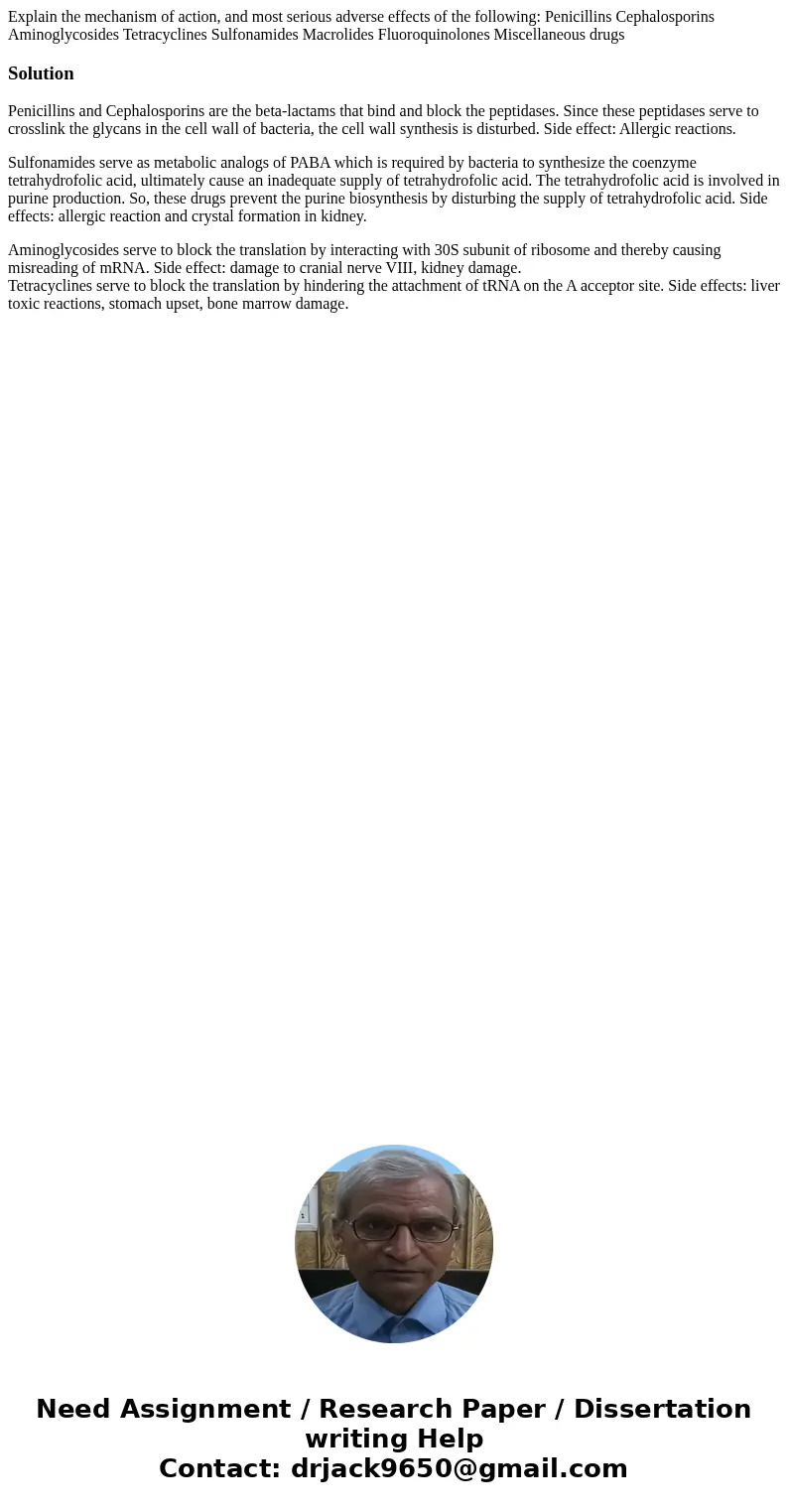Explain the mechanism of action and most serious adverse eff
Explain the mechanism of action, and most serious adverse effects of the following: Penicillins Cephalosporins Aminoglycosides Tetracyclines Sulfonamides Macrolides Fluoroquinolones Miscellaneous drugs
Solution
Penicillins and Cephalosporins are the beta-lactams that bind and block the peptidases. Since these peptidases serve to crosslink the glycans in the cell wall of bacteria, the cell wall synthesis is disturbed. Side effect: Allergic reactions.
Sulfonamides serve as metabolic analogs of PABA which is required by bacteria to synthesize the coenzyme tetrahydrofolic acid, ultimately cause an inadequate supply of tetrahydrofolic acid. The tetrahydrofolic acid is involved in purine production. So, these drugs prevent the purine biosynthesis by disturbing the supply of tetrahydrofolic acid. Side effects: allergic reaction and crystal formation in kidney.
Aminoglycosides serve to block the translation by interacting with 30S subunit of ribosome and thereby causing misreading of mRNA. Side effect: damage to cranial nerve VIII, kidney damage.
Tetracyclines serve to block the translation by hindering the attachment of tRNA on the A acceptor site. Side effects: liver toxic reactions, stomach upset, bone marrow damage.

 Homework Sourse
Homework Sourse